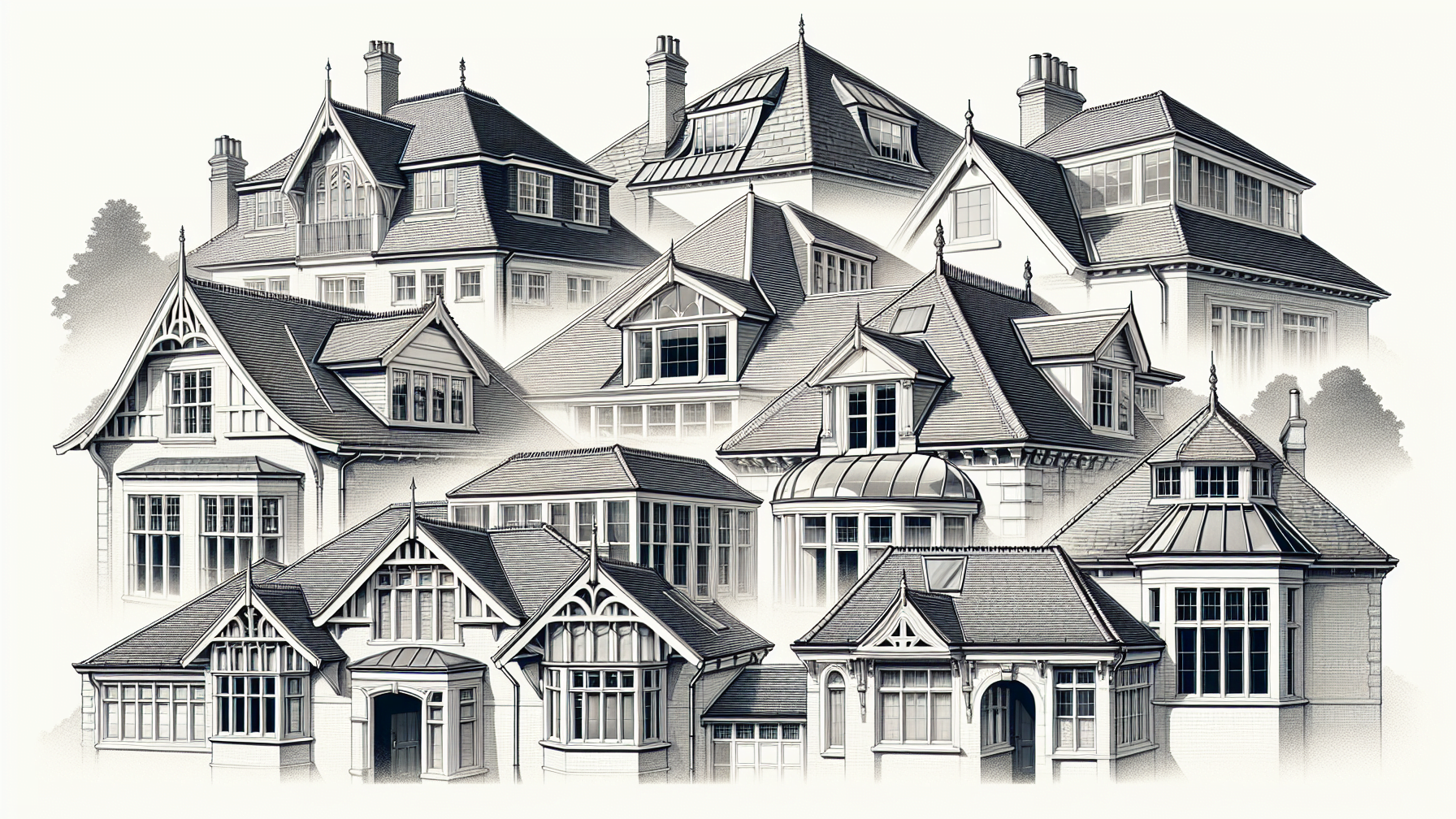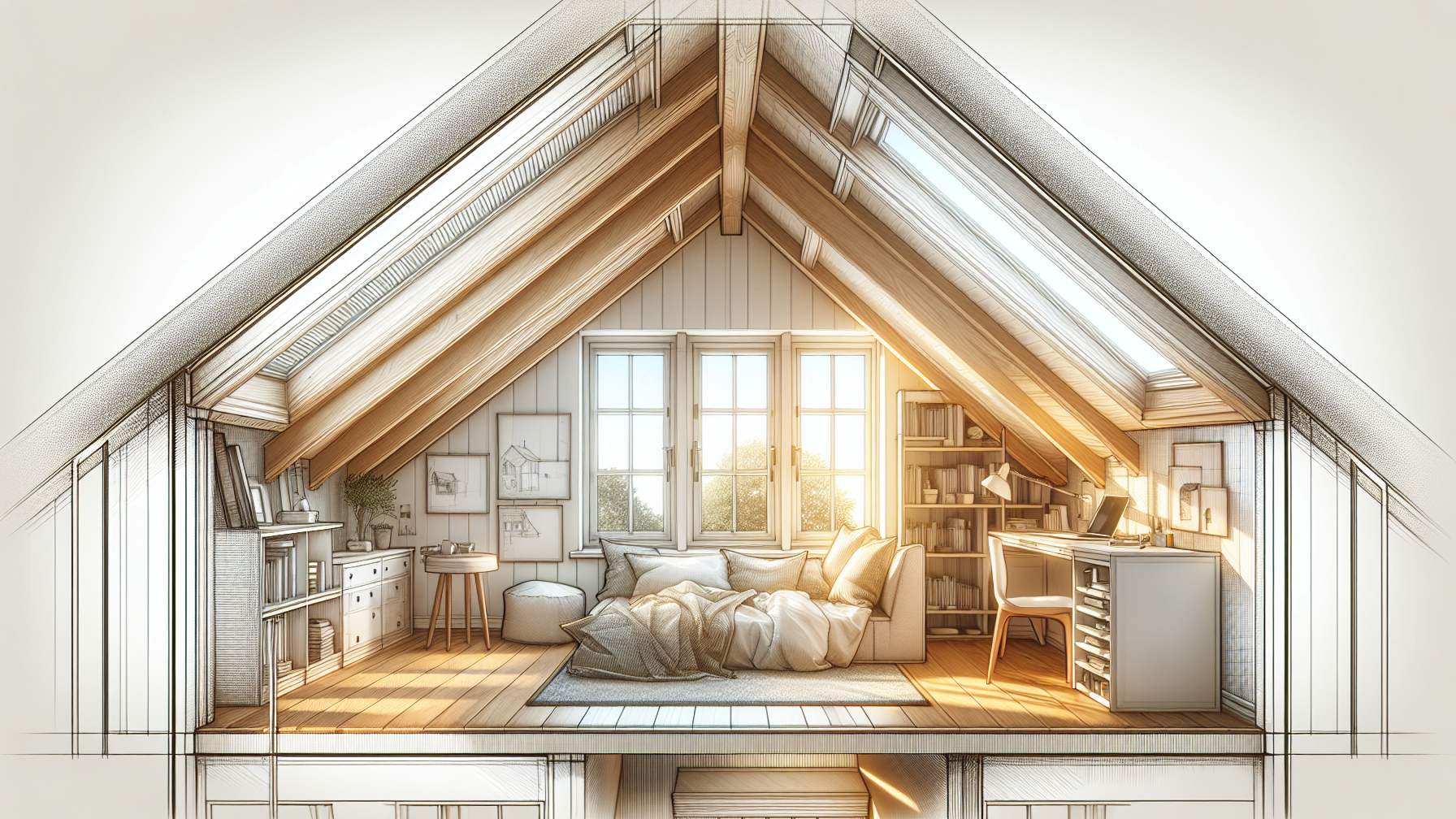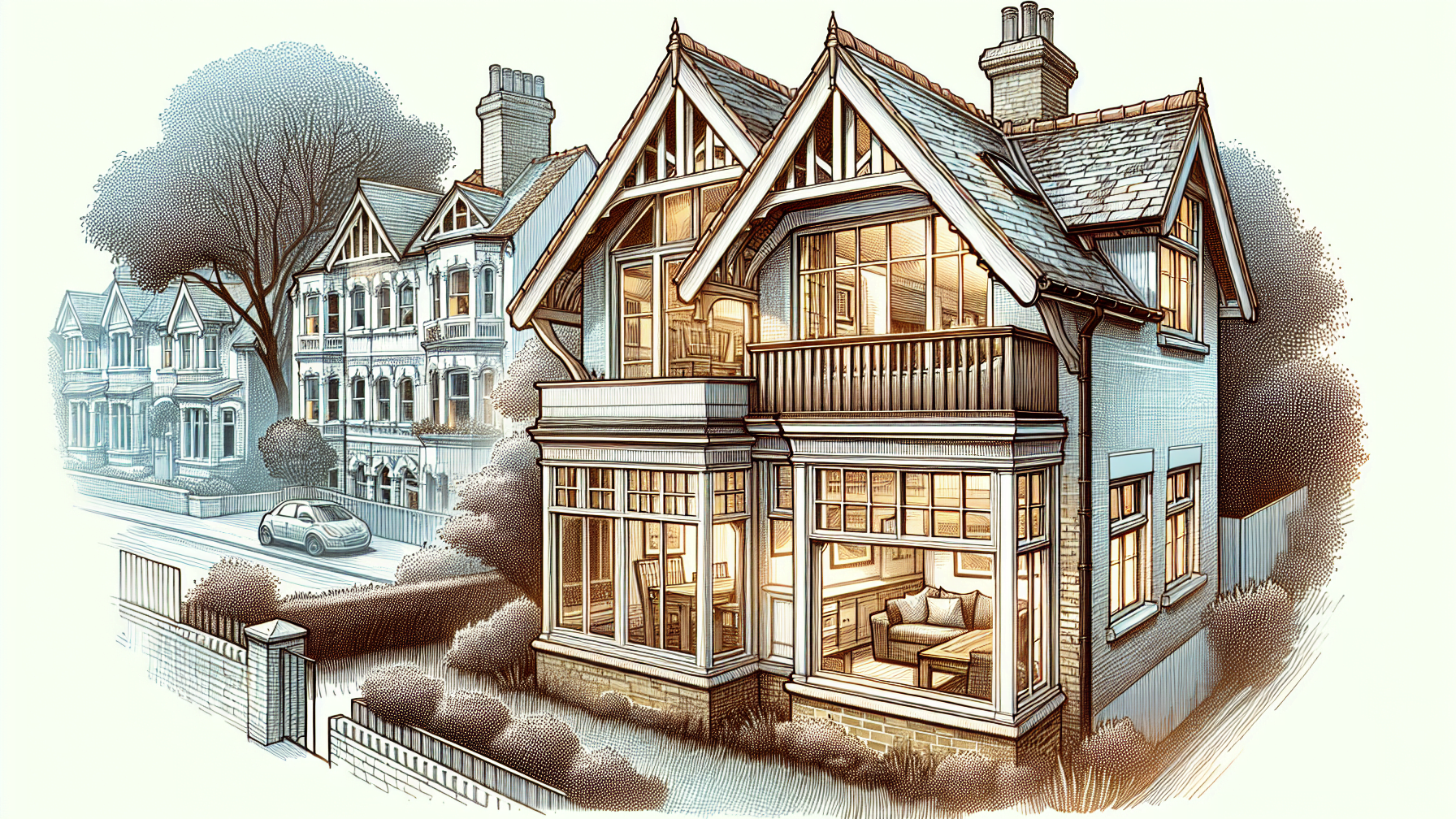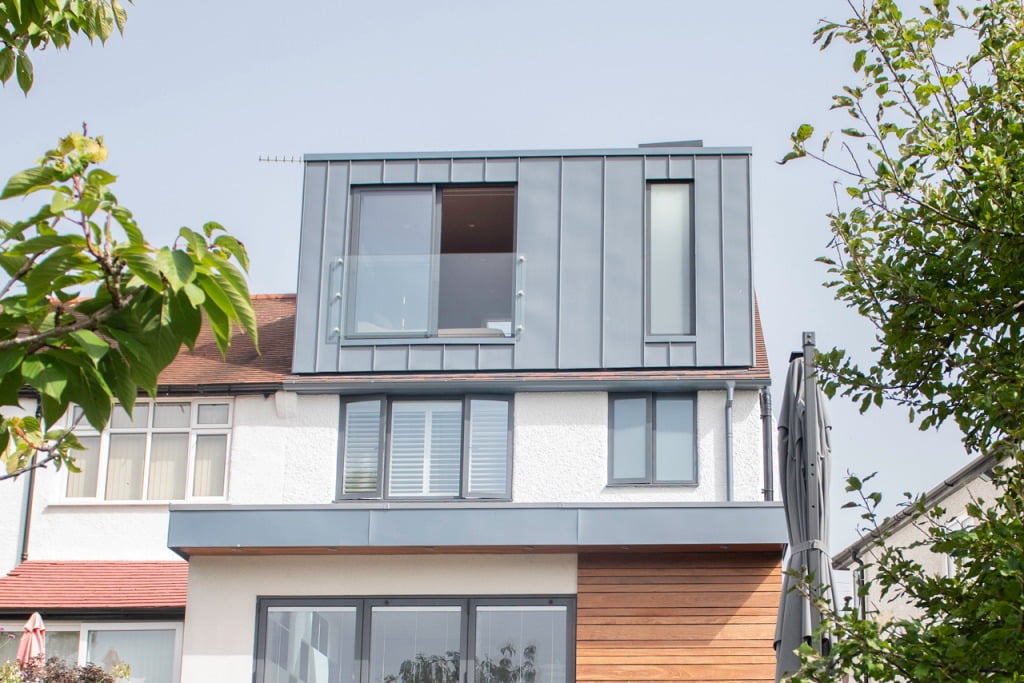Want to maximize your home’s potential by converting a loft? Dormer loft conversion is one most popular loft conversion types, which you really should consider. This conversion can unlock additional headroom and floor space, making that cramped attic a vibrant part of your living environment. Whether for an extra bedroom or that dream home office, we’ll provide practical tips on types of dormers, evaluating your home’s suitability, the planning process, and cost considerations, equipping you with essential insight for your expansion journey.
Exploring the Basics of Dormer Loft Conversions
A rear dormer loft conversion involves:
- Adding a structural extension to your existing pitched roof as part of rear dormer loft conversions
- Creating vertical walls perpendicular to the floor
- Providing additional space and headroom in the loft area
This popular home improvement project can significantly increase your home’s headspace and floor space. Imagine transforming your cramped attic into a spacious living area or a cosy home office. It’s intriguing, isn’t it?
But it’s not just about creating extra space. The real challenge lies in designing a structure that complements the proportions of your existing house. When executed well, a dormer loft conversion can add up to 50 cubic meters of additional space to your property – equivalent to an extra bedroom or a comfortable home office.
Types of Dormer Structures for Your Loft

Just as every home is unique, so are the various types of dormer structures available for your loft. From the flat-roof dormer, which maximizes internal space, to the charming gable-fronted dormer, which adds aesthetic appeal, and even the elegant hipped-roof dormer, each type has its unique benefits and design features.
We’ll delve into each one to help you decide which is the best fit for your home.
Flat Roof Dormer Loft Conversion: Maximizing Internal Space

A flat roof dormer loft conversion involves transforming the empty attic space into a usable room, typically adding more headroom and floor space. This is done by extending the existing roof structure outward to create a box-like shape that protrudes from the roof’s slope. The top of the dormer is flat, unlike other dormer designs that might have sloped roofs. This type of conversion is popular because it maximizes the livable space within the loft and can significantly increase the natural light and ventilation of the room, often including windows and sometimes French doors. It’s a practical choice if you’re looking to add an extra bedroom, office, or living area to your home.
The flat roof dormer is a popular choice among homeowners, and for good reason. This type of loft conversion is designed to maximize the internal space and head height in your new loft. Consider the possibilities of a loft space that feels open and bright, with no awkward corners to limit your interior design dreams.
Gable Dormer Loft Conversion: Aesthetic Appeal and Extra Space
A gable dormer loft conversion is a type of home renovation that expands the usable space in your attic by adding a vertical windowed structure that projects from the existing slope of the roof. This design features a gabled roof, which means it has a triangular shape with two sloping sides that meet at a peak, similar to many traditional house roofs. Gable dormers not only increase the floor area and ceiling height in your loft, making it more livable, but they also enhance the exterior aesthetic of your house by adding architectural interest. This type of conversion is ideal for adding natural light and could be used for new bedrooms, offices, or other living spaces.
Consider the gable-fronted dormer if you’re looking for an option that combines functionality with visual appeal. This type of loft conversion enhances the exterior appeal of your property, contributing to its aesthetic value.
But the benefits of a gable dormer go beyond its pleasing architecture. This type of dormer also creates extra usable space within your home, making it an excellent choice if you want to add an extra bedroom or a spacious home office.
Hipped Roof Dormer Loft Conversion: Elegant Design, Less Usable Space
A hipped roof dormer loft conversion is a way to expand the usable space in the attic by adding a dormer with a hipped roof, which consists of three sloping planes that meet the existing roof. The front plane is typically vertical, like a standard dormer, but the sides slope gently back, creating a more subtle and integrated appearance than more angular dormers. This style not only maximizes interior space, providing more headroom and potentially more floor space but also tends to blend better with the existing roof design, maintaining a cohesive look. It’s a great option for increasing natural light and ventilation in the new space, which can be used for additional bedrooms, a study, or other living areas.
For homeowners seeking an elegant design, the hipped roof dormer might be the perfect fit. This design features a sloped roof on three sides, providing an aesthetically pleasing look that seamlessly blends with various architectural styles.
While this design might provide less usable space compared to the flat roof dormer due to its sloping design, its visual appeal makes it a popular choice among homeowners. The hipped roof dormer contributes to a seamless and unobtrusive exterior look, often blending better with the existing roof line than other dormer types.
Assessing Your Home’s Suitability for a Dormer Conversion
Before you start dreaming about your new loft, it’s essential to assess your home’s suitability for a dormer conversion. Homes that are typically suitable for this type of conversion include:
- Terraced houses with pitched roofs and existing loft spaces
- Semi-detached house with pitched roofs and existing loft spaces
- Detached houses with pitched roofs and existing loft spaces
However, it’s important to ensure that your existing roof structure can support the additional weight and dimensions of the dormer addition. Remember, the feasibility of installing a dormer isn’t just about space; it’s also about your home’s structural integrity.
Planning Permission and Building Regulations Approval for Dormer Lofts
One of the most crucial aspects of planning your dormer loft conversion is understanding the necessary permissions and regulations. In many cases, dormer conversions fall under permitted development rights, eliminating the need for planning permission if specific conditions are met.
However, even if your project falls under permitted development, it’s advisable to obtain a Lawful Development Certificate (LDC). This certificate not only evidences compliance with permitted development but also assures future property buyers of the dormer’s legal and design adequacy.
Remember about building regulations, which are integral to ensuring the dormer loft conversion will be safe and habitable. Specific requirements include a minimum headroom of 2.2 meters.
From water pressure and wastewater management for a new bathroom to obtaining a party wall agreement if you’re converting a terraced or semi-detached property, these regulations are crucial for a successful project.
The Advantages of Adding a Dormer Window

Incorporating dormer windows into your loft conversion offers several benefits:
- Increases the aesthetic appeal of the space
- Enhances the functionality of the space
- Significantly increases the availability of natural light
- Ensures improved ventilation
- Creates a brighter and more open living environment
Moreover, dormer windows provide significant additional headroom, effectively increasing the functional space for activities within your loft conversion. Whether you’re envisioning a cosy reading nook or a window seat recess with a scenic view, the architectural possibilities with dormer windows are endless.
Cost Analysis of a Dormer Loft Conversion Project
Starting on a dormer loft conversion project isn’t just about creating additional space; it’s also a significant financial investment. The costs for such a project can depend on various factors, from the size and type of dormer to the materials used and the labour involved.
A small-scale dormer loft conversion generally costs between £35,000 and £60,000, while a larger project can cost between £ 55,000 and £80,000. A high-end dormer loft can cost up to £150,000 or even more. The costs associated with building regulation approvals and necessary on-site inspections usually vary between £500 and £1,000.
But remember, a dormer loft conversion is more than just a cost; it’s an investment. A well-executed conversion can increase your property value by approximately 20%, and in areas like London, this increase can be around 24.5%.
Creative Ideas for Utilizing Your New Dormer Loft Space
Once you’ve navigated the planning and construction process, the real fun begins – brainstorming creative ideas to utilize your new dormer loft space. Whether you’re accommodating a growing family or creating a dedicated home office, the versatility of dormer lofts meets various needs.
Why not transform your loft into:
- a tranquil master bedroom
- a dedicated workspace, away from the hustle and bustle of the rest of the house
- unique storage solutions, integrating them into the architectural features of your dormer loft
The possibilities are limited only by your imagination.
Selecting the Right Professionals for Your Dormer Loft Conversion
Selecting the right professionals for your dormer loft conversion is a critical step in ensuring a successful project. Here are some tips to help you find the right loft company:
- Look for builders with proven expertise in loft conversions.
- Check for positive client feedback and reviews.
- Ensure they carry appropriate insurance coverage to protect you from unforeseen circumstances.
By following these tips, you can find the right professionals for your dormer loft conversion.
Consider choosing a loft conversion company belonging to the Checkatrader for a guarantee of high-quality standards. Additionally, consult with structural engineers or qualified building professionals when altering the roof structure for your dormer loft conversion. This process requires specialized knowledge and expertise, and the right professionals can make all the difference.
Enhancing Your Property Value with a Dormer Loft

A well-executed dormer loft conversion can be a game-changer for your property. Not only does it enhance your living space and provide a traditionally shaped interior, but it can also significantly increase your property value.
In fact, a well-executed loft conversion can boost property value by approximately 20%. Loft conversions offer a cost-effective means of adding value and are often more economical than other forms of property expansion or home improvement. So, while the initial costs might seem steep, remember that a dormer loft conversion is an investment that can pay off in the long run.
Challenges of Dormer Loft Conversion
Every construction project has its unique set of challenges, and dormer loft conversions are no exception. The construction timeline for your dormer conversion may vary depending on various factors, such as the dormer type and weather conditions. Here are some of the main issues you might encounter:
- Structural Integrity: The existing house structure must be capable of supporting the additional weight of the dormer. This often involves strengthening the floor joists and ensuring that the roof and walls can support the new construction.
- Planning Permission and Regulations: Depending on your location, you may need to obtain planning permission from local authorities. Dormer conversions often change the external appearance of the house, which might not always be permitted under local development guidelines. Additionally, the conversion must comply with building regulations concerning fire safety, energy efficiency, and accessibility.
- Weather Considerations: Since the construction involves opening up part of the roof, there is a risk of water ingress if the work is not properly scheduled and executed. Weather can be unpredictable, so it’s crucial to plan for quick weatherproofing or choose a time of year with generally favourable conditions.
- Space Limitations: While dormer conversions are intended to add space, the existing layout of the attic and the roof’s pitch can limit what’s achievable. Navigating these limitations requires careful design to maximize the space effectively without compromising the structure or aesthetic of the home.
- Aesthetic Integration: The dormer’s design should complement the house’s existing architecture. A dormer that looks out of place can affect the property’s curb appeal and potentially its value. Achieving seamless integration requires thoughtful design and choice of materials.
- Neighbouring Properties: Adding a dormer can impact neighbouring properties in terms of privacy, as it may overlook adjacent homes or gardens. If not handled sensitively, this can lead to objections from neighbours or even legal disputes.
- Cost and Budgeting: Dormer conversions can be complex and costly. Unexpected issues, such as structural inadequacies or unforeseen planning requirements, can escalate costs beyond the initial budget. It’s important to have a well-planned budget and possibly a contingency fund for unexpected expenses.
However, with careful planning and professional assistance, these challenges can be efficiently navigated. Navigating these challenges typically requires the expertise of professionals, including architects, structural engineers, and experienced builders, to ensure that the project is successful, compliant with all regulations, and beneficial in adding value to your home.
To Sum-up
Dormer loft conversions are a unique solution to space shortages, offering homeowners a way to maximize their space without the need to move house. Whether you opt for a flat roof dormer, a gable dormer, or a hipped roof dormer, each type has unique benefits and design features.
Navigating the planning, construction, and design process can be challenging, but the benefits certainly outweigh the hurdles. From enhancing your property value to creating a functional and aesthetically pleasing space, a dormer loft conversion can be a wise investment for homeowners.
Key Takeaways
- Dormer loft conversions offer a meaningful increase in space and headroom to attic areas while complementing existing house proportions, potentially adding up to 50 cubic meters of additional living space.
- There are several types of dormer loft conversions, each providing unique benefits; flat roof dormers maximize internal space, gable dormers offer aesthetic appeal, and hipped roof dormers provide an elegant design with a streamlined exterior appearance.
- A successful dormer loft conversion requires considering planning permissions, ensuring structural integrity, and working with skilled professionals, which can result in a significant increase in property value by around 20%.
Frequently Asked Questions
Enhancing Your Property Value with a Dormer Loft
In general, you do not need planning permission for a rear dormer, as it often falls under permitted development. However, there are specifications to consider, such as size and the type of area you live in.
What is a dormer loft conversion?
A dormer loft conversion involves adding walls at a 90-degree angle to the floor, increasing headspace and floor space in your home. It is a structural addition to an existing pitched roof.
How much does a dormer loft conversion cost?
A small-scale dormer loft conversion generally costs between £35,000 and £60,000, while a larger project can cost between £ 55,000 and £80,000. A high-end dormer loft can cost up to £150,000 or even more.
How can a dormer loft conversion enhance my property value?
A dormer loft conversion can enhance your property value by approximately 20%, making it a wise investment for homeowners.
